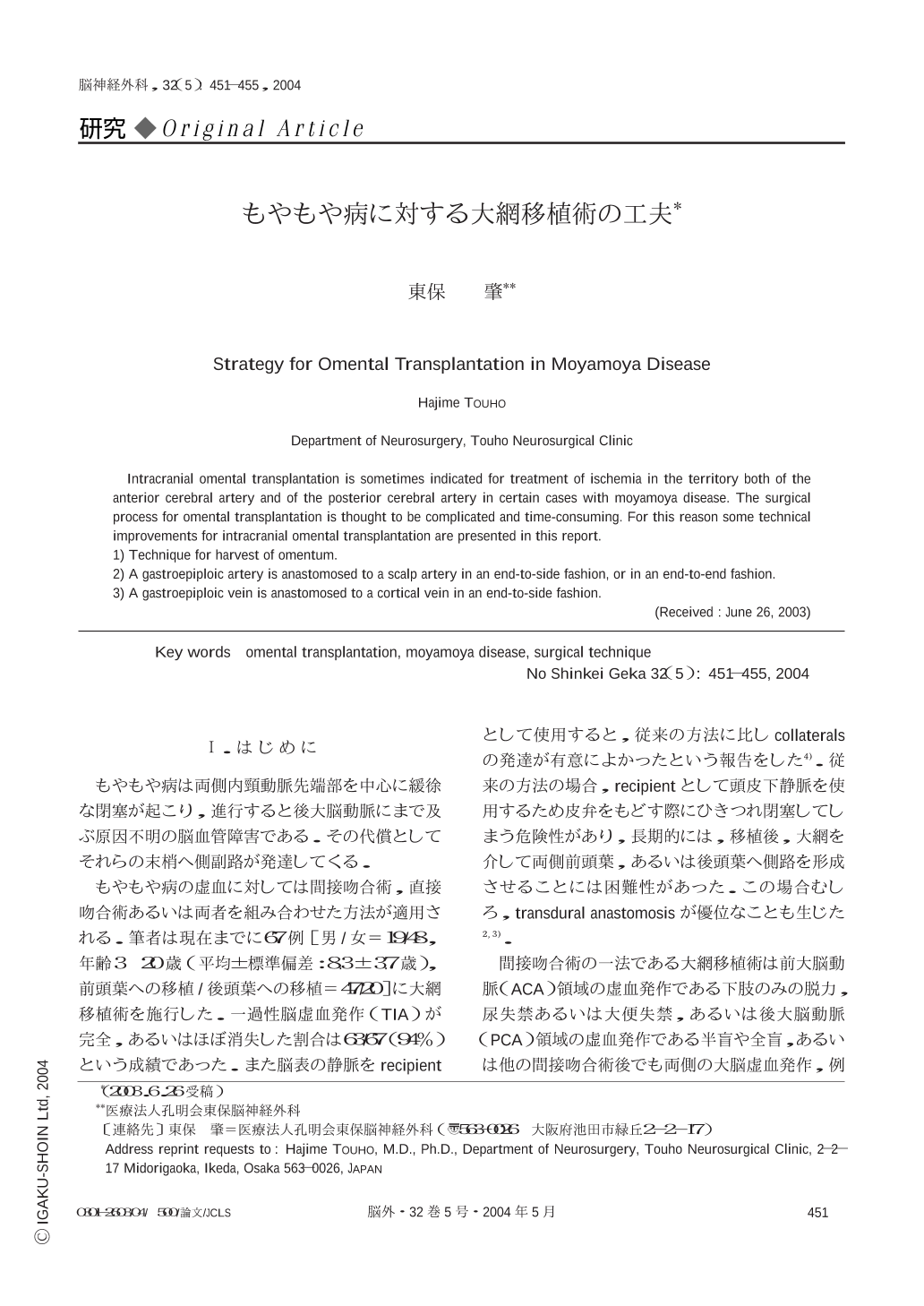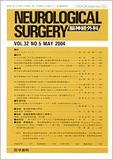Japanese
English
- 有料閲覧
- Abstract 文献概要
- 1ページ目 Look Inside
Ⅰ.はじめに
もやもや病は両側内頸動脈先端部を中心に緩徐な閉塞が起こり,進行すると後大脳動脈にまで及ぶ原因不明の脳血管障害である.その代償としてそれらの末梢へ側副路が発達してくる.
もやもや病の虚血に対しては間接吻合術,直接吻合術あるいは両者を組み合わせた方法が適用される.筆者は現在までに67例[男/女=19/48,年齢3~20歳(平均±標準偏差:8.3±3.7歳),前頭葉への移植/後頭葉への移植=47/20]に大網移植術を施行した.一過性脳虚血発作(TIA)が完全,あるいはほぼ消失した割合は63/67(94%)という成績であった.また脳表の静脈をrecipientとして使用すると,従来の方法に比しcollateralsの発達が有意によかったという報告をした4).従来の方法の場合,recipientとして頭皮下静脈を使用するため皮弁をもどす際にひきつれ閉塞してしまう危険性があり,長期的には,移植後,大網を介して両側前頭葉,あるいは後頭葉へ側路を形成させることには困難性があった.この場合むしろ,transdural anastomosis が優位なことも生じた2,3).
間接吻合術の一法である大網移植術は前大脳動脈(ACA)領域の虚血発作である下肢のみの脱力,尿失禁あるいは大便失禁,あるいは後大脳動脈(PCA)領域の虚血発作である半盲や全盲,あるいは他の間接吻合術後でも両側の大脳虚血発作,例えば四肢麻痺や麻痺を伴う失語,両下肢脱力発作などが起こる場合のやり直しの血行再建術として施行されることがある手技であるが,今回この大網移植術1-7)の手技上の工夫の実際につき筆者の経験をもとに報告する.
Intracranial omental transplantation is sometimes indicated for treatment of ischemia in the territory both of the anterior cerebral artery and of the posterior cerebral artery in certain cases with moyamoya disease. The surgical process for omental transplantation is thought to be complicated and time-consuming. For this reason some technical improvements for intracranial omental transplantation are presented in this report.
1) Technique for harvest of omentum.
2) A gastroepiploic artery is anastomosed to a scalp artery in an end-to-side fashion,or in an end-to-end fashion.
3) A gastroepiploic vein is anastomosed to a cortical vein in an end-to-side fashion.

Copyright © 2004, Igaku-Shoin Ltd. All rights reserved.


